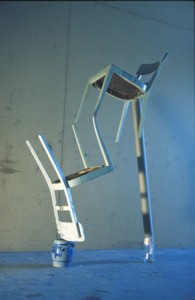Last year, I visited the American Museum of Natural History in New York and as I was listening to the explanation of the big bang, I realized the person speaking to me on my headphones was Whoopi Goldberg. The science was pure and factual, and yet, the delivery was so friendly and so magical, that even a lay-person like me was completely engaged.
As an art museum director, I reflect on how science museums, zoos and botanical gardens have been so much more effective at adapting to 21st century needs and attracting diverse audiences. Art museums in the United States have a tough challenge in this respect, as the arts are less and less a funding priority in schools. From a very early age, the message tends to be that art does not quite mesh with life as do math, language and sports. The arts are also competing these days with endlessly-increasing entertainment and social offerings. Despite and maybe even because of all this, museums are placing more efforts than ever on attracting new audiences; and methods to do so have become quite creative.
Museums today, are assuming outreach roles way beyond traditional ones. The definition of diversity has expanded beyond the “multi-culti” 1980s socio-economic and cultural model. Approaches have widened with activities that stretch across disciplines and interests: MoMa offers yoga classes in their galleries; and Queens Museumof Art has cooking workshops, for example. The Bass Museum of Art (which I manage) has a jazz series and monthly Sunday classical concerts.
In fact, museums are following what leading art fairs so effectively set into motion: embracing lifestyle and social activities to attract young professionals, socialites, and the general public to its doors with happy hours, parties, programs for seniors and wine-tasting events. Finally, museum cafes are being upgraded and museum restaurants are becoming, more and more, destinations in their own right (see January 29, 2010 New York Times article: “After the Putti, the Baby Calamari”).
Partnerships have become essential and very effective in accessing diverse audiences. Art museums collaborate with nearby public schools, for example, not only to offer students guided visits, but also through in-school initiatives such as museum-led hands-on workshops, teacher training and artists’ visits.
The Bass Museum initiated IDEA@theBass, an in-school program in collaboration with Stanford University, which uses art as a catalyst to promote critical thinking skills. In Spring 2010, this program will enter all six Miami Beach public schools (for now). It will engage school children with repeat experiences with art and creativity; and most importantly, it will reach each and every student from K-3rd grade. Museums also partner with numerous other cultural organizations, local governments and social service agencies to seek new communities.
Art museums, yet, still do need to go back to the museums of science, botanical gardens and zoos to observe and learn more about how to communicate. The other day, a very smart person recommended we look for new ideas beyond museums; to street fairs, malls and online communities. Another smart person, someone on my board in fact, is very conscious of and always stresses the importance of bilingual exhibition labels, pod casts and well-trained docents.
Thinking back on Whoopi Goldberg and her explanation of the big bang, a lot can be done by museums simply in the area of “delivery”. Once we have a visitor at our door, let’s work on making the museum-visiting experience just plain fun.
Silvia Karman Cubina
Executive Director and Chief Curator
Bass Museum of Art, Miami Beach
An independent curator since 1997, Cubina was most recently the director of The Moore Space, Miami, from 2002-2008. In the past, she held the position of Adjunct Curator at inova, the Institute of Visual Arts; University of Wisconsin, Milwaukee; and positions at The Mexican Museum in San Francisco and the Cuban Museum of Art in Miami. At The Moore Space, Cubina organized exhibition projects with artists such as: Allora & Calzadlla, Carlos Amorales, John Bock, Sean Dack, Jeppe Hein, Tracey + The Plastics, Jonathan Monk, Aida Ruilova, Hernan Bas, Jim Lambie, Patty Chang, Joan Jonas, Yang Fudong, and numerous group exhibitions. In 2007, she worked on French Kissing in the USA, a group exhibition that takes its title from a 1986 hit song by Blondie, to present the emerging scene of French artists. Independently, Cubina has worked on exhibitions such as None of the Above: Contemporary Work by Puerto Rican Artists at Real Art Ways, Hartford, CT; Quirky, Odd and Out of Sorts at MACLA, San Jose, CA; Landmark/Allora & Calzadilla at the Escuela de Artes Plasticas in San Juan; Quisqueya Henríquez; Habitat en Tránsito/Piñones (In-Situ), Javier Cambre’s project for the 2002 Bienal Exhibition of the Whitney Museum of American Art; Pepón Osorio: Door to Door at Museo de Arte de Puerto Rico in San Juan; Arte del Nuevo Medio: Doce Propuestas Electrónicas at the Museo de Arte Contemporaneo de Puerto Rico; and she was the Puerto Rico commissioner to the 1997 Bienal de Sao Paolo. Cubina has participated in Project Rooms at ARCO and ArtMiami, has lectured extensively and participated in numerous grant panels and award selection committees, most recently as a juror to the Guggenheim Museum’s Hugo Boss Award for 2006. In 2007, she was a finalist for the Walter Hopps Award for Curatorial Achievement and will participate in the Center for Curatorial Leadership program.